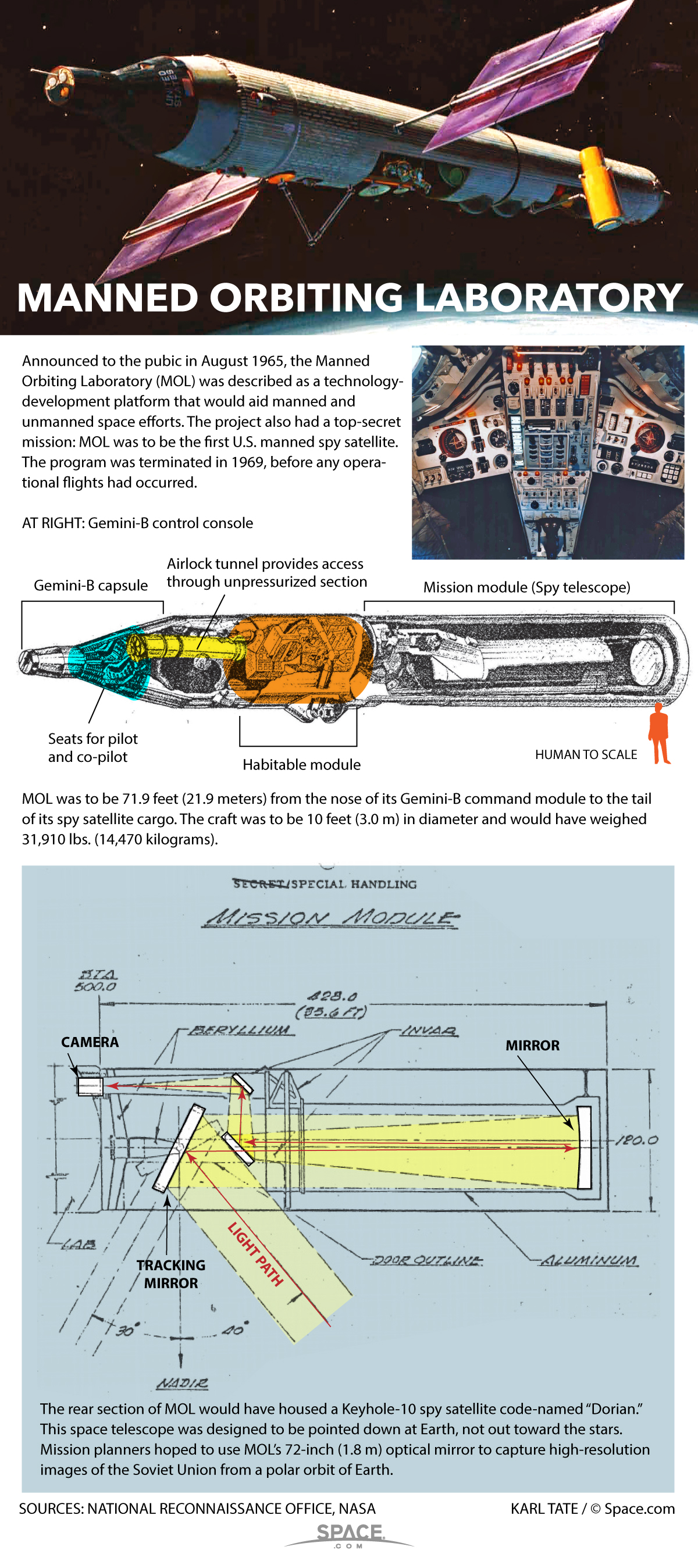Manned Orbiting Laboratory: Secrets of a US Military Space Station (Infographic)

Announced to the pubic in August 1965, the Manned Orbiting Laboratory (MOL) was described as a technology-development platform that would aid manned and unmanned space efforts. The project also had a top-secret mission: MOL was to be the first U.S. manned spy satellite. The program was terminated in 1969, before any operational flights had occurred.
MOL was to be 71.9 feet (21.9 meters) from the nose of its Gemini-B command module to the tail of its spy satellite cargo. The craft was to be 10 feet (3.0 m) in diameter and would have weighed 31,910 lbs. (14,470 kilograms).
The rear section of MOL would have housed a Keyhole-10 spy satellite code-named “Dorian.” This space telescope was designed to be pointed down at Earth, not out toward the stars. Mission planners hoped to use MOL’s 72-inch (1.8 m) optical mirror to capture high-resolution images of the Soviet Union from a polar orbit of Earth.
Join our Space Forums to keep talking space on the latest missions, night sky and more! And if you have a news tip, correction or comment, let us know at: community@space.com.
Get the Space.com Newsletter
Breaking space news, the latest updates on rocket launches, skywatching events and more!

Karl's association with Space.com goes back to 2000, when he was hired to produce interactive Flash graphics. From 2010 to 2016, Karl worked as an infographics specialist across all editorial properties of Purch (formerly known as TechMediaNetwork). Before joining Space.com, Karl spent 11 years at the New York headquarters of The Associated Press, creating news graphics for use around the world in newspapers and on the web. He has a degree in graphic design from Louisiana State University and now works as a freelance graphic designer in New York City.